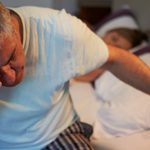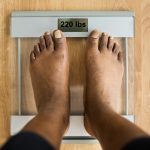
If you and your partner fall silent when vexing money issues arise, new research suggests you are not alone. A team from Cornell University found that the more stressed people were about their finances, the less likely they were to discuss those concerns with their romantic partners. The findings were published recently in the Journal of Consumer Psychology. “This is the first thing that fascinated us about this topic — that financially stressed individuals who need to have these conversations the most are the least likely to have them,” said study co-author Emily Garbinsky, an associate professor of professor of marketing and management communication at Cornell. Financial stress affects a staggering 70% of Americans, the researchers noted, and includes feelings of being overwhelmed with spending, struggling to meet financial obligations and worrying about money management. Even those who are well-off can struggle with financial anxiety, and this stress makes it tough to have constructive conversations about money with their partners. Not surprisingly, a common strategy is to avoid the sensitive subject completely, the researchers noted. Why? What they discovered was that this avoidance stems from the belief that financial conflicts with a partner are perpetual rather than solvable. In the study, scientists sifted through survey data from thousands of folks who either completed the Consumer Financial Protection Bureau’s National Financial Well-Being Survey or a survey… read on > read on >


















